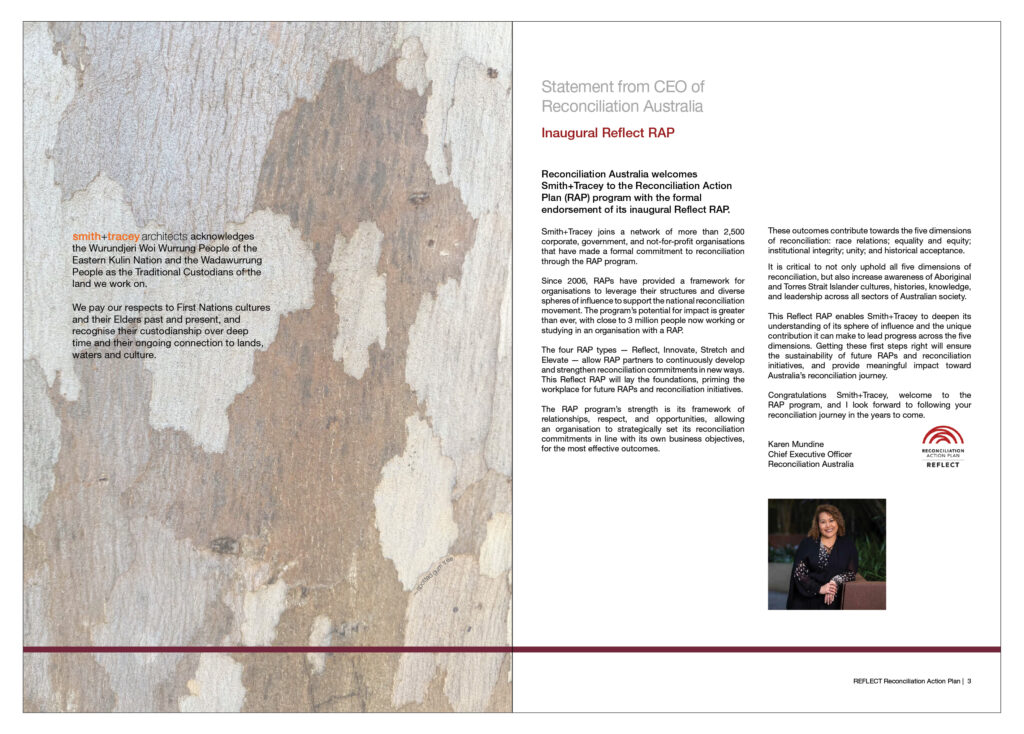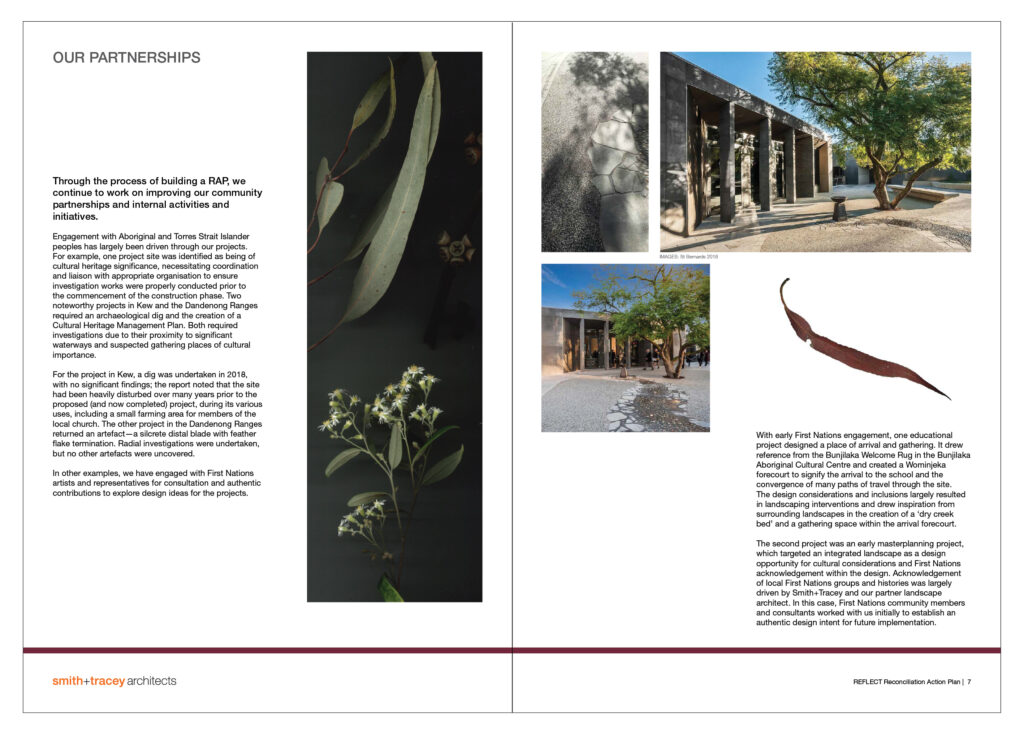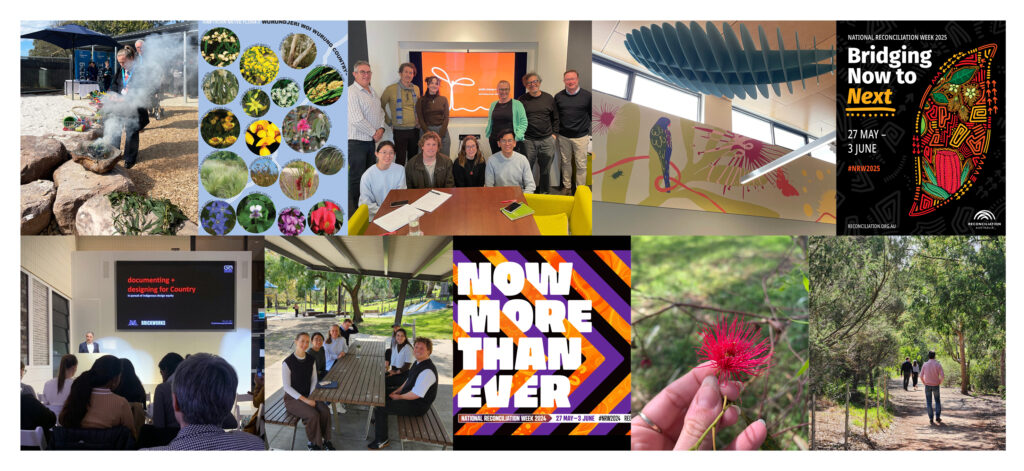The steps we are taking are focused on the future of the practice, as S+T continues to deepen its understanding and align its philosophies with the RAP framework to meaningfully contribute to reconciliation.
Our practice philosophy
Our practice philosophy is “people-centred design,” which we truly believe is the purpose of the work we do. As designers, we influence the spaces our community inhabits, and we have a responsibility to acknowledge, respect, and learn about the places and people we design for. Our collective learning experience shapes our cultural and community-focused projects. We consistently seek to deliver value through design, benefiting clients competitively, strategically, and creatively. Our culture of learning harnesses the energy and enthusiasm of our passionate team, ensuring that individual knowledge becomes our collective strength.
We want our projects to be genuinely of place, learning directly from consultative engagement with Australia’s First Peoples. This philosophy creates the framework for how we create, discuss, review and implement our projects.
“Our work fundamentally impacts both people and landscapes, placing upon us a significant responsibility to positively influence the community and the environment.
Our RAP (Reconciliation Action Plan) Working Group has made significant strides in advancing reconciliation and fostering inclusivity within our organisation. Below are some key achievements:
- We have established and maintained a working group for monthly meetings
- We are tackling what reconciliation means as individuals and as members of Smith+Tracey Architects
- Undergone research to further our understanding of our communities, lands and history and by doing so, begun to build a resource library for office wide use
- Engaged in external professional development sessions to continue to listen and learn from those outside the office
- Developed an initial First Nations Cultural Heritage Recognition Framework and implemented these cultural inclusion design strategies on projects currently underway
“In the future, we aspire to ensure that our engagement with reconciliation and First Nations peoples is driven by a deep consideration of acknowledgment, respect, and inclusion, and by our journey toward reconciliation, embedded from first principles design.



